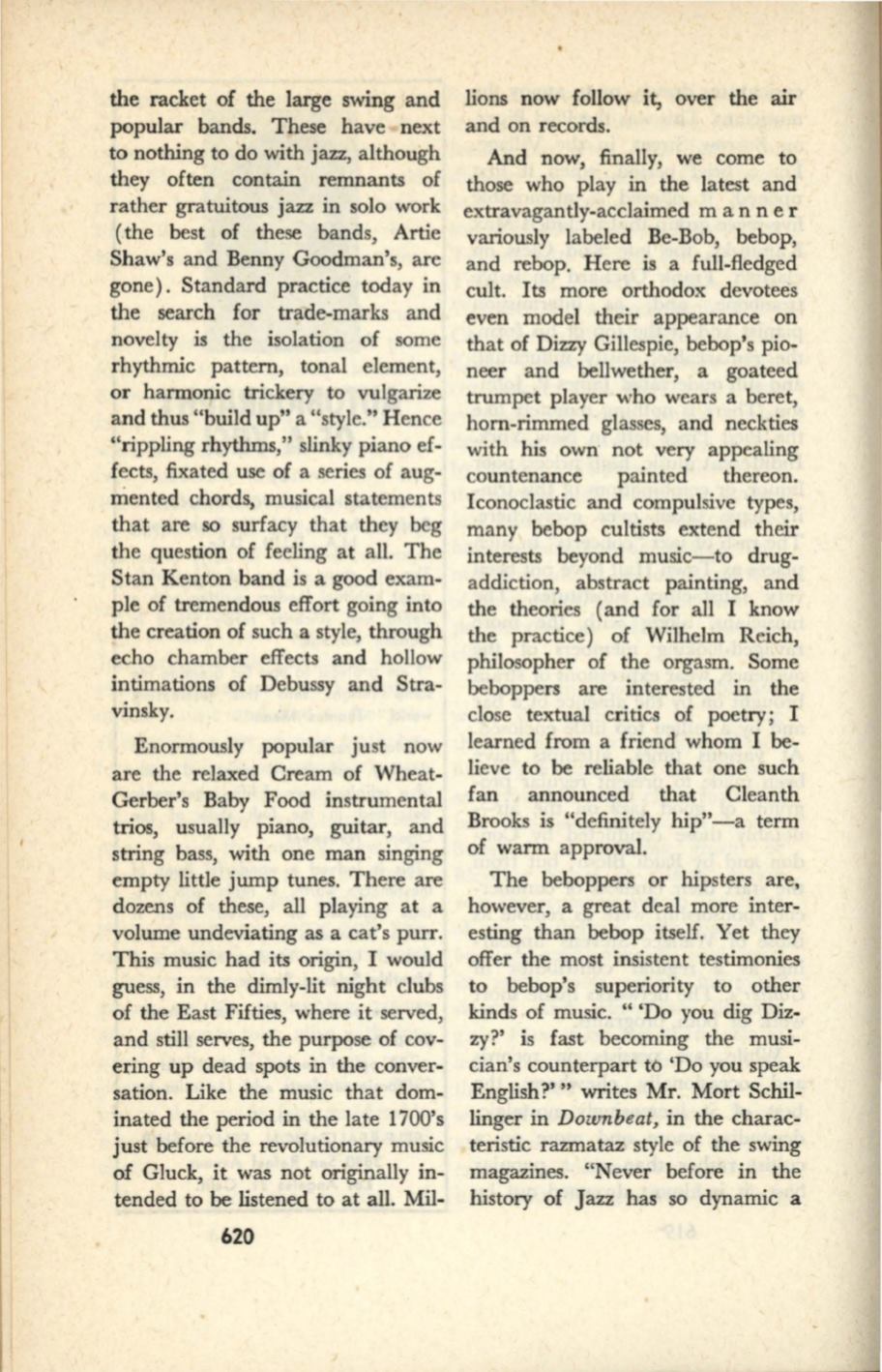
the racket of the large swing and
popular bands. These have next
to nothing to do with jazz, although
they often contain remnants of
rather gratuitous jazz in solo work
(the best of these bands, Artie
Shaw's and Benny Goodman's, are
gone). Standard practice today in
the search for trade-marks and
novelty is the isolation of some
rhythmic pattern, tonal element,
or harmonic trickery to vulgarize
and thus "build up" a "style." Hence
"rippling rhythms," slinky piano ef–
fects, fixated use of a series of aug–
mented chords, musical statements
that are so surfacy that they beg
the question of feeling at all. The
Stan Kenton band
is
a good exam–
ple of tremendous effort going into
the creation of such a style, through
echo chamber effects and hollow
intimations of Debussy and Stra–
vinsky.
Enormously popular just now
are the relaxed Cream of Wheat–
Gerber's Baby Food instrumental
trios, usually piano, guitar, and
string bass, with one man singing
empty little jump tunes. There are
dozens of these, all playing at a
volume undeviating as a eat's purr.
This music had its origin, I would
guess, in the dimly-lit night clubs
of the East Fifties, where it served,
and still serves, the purpose of cov–
ering up dead spots in the conver–
sation. Like the music that dom–
inated the period in the late 1700's
just before the revolutionary music
of
Gluck, it was not originally in–
tended to
be
listened to at all. Mil-
620
lions now follow it, over the air
and on records.
And now, finally, we come to
those who play in the latest and
extravagantly-acclaimed m an n e r
variously labeled Be-Bob, bebop,
and rebop. Here is a full-fledged
cult. Its more orthodox devotees
even model their appearance on
that of Dizzy Gillespie, bebop's pio–
neer and bellwether, a goateed
trumpet player who wears a beret,
horn-rimmed glasses, and neckties
with his own not very appealing
countenance
painted
thereon.
Iconoclastic and compulsive types,
many bebop cultists extend their
interests beyond music-to drug–
addiction, abstract painting, and
the theories (and for all I know
the practice) of Wilhelm Reich,
philosopher of the orgasm. Some
beboppers are interested in the
close textual critics of poetry; I
learned from a friend whom I be–
lieve to be reliable that one such
fan announced that Cleanth
Brooks is "definitely hip"-a term
of warm approval.
The beboppers or hipsters are,
however, a great deal more inter–
esting than bebop itself. Yet they
offer the most insistent testimonies
to bebop's superiority to other
kinds of music. " 'Do you dig Diz–
zy?' is fast becoming the musi–
cian's counterpart to 'Do you speak
English?'" writes Mr. Mort Schil–
linger in
Downbeat,
in the charac–
teristic razmataz style of the swing
magazines. "Never before in the
history of Jazz has so dynamic a


